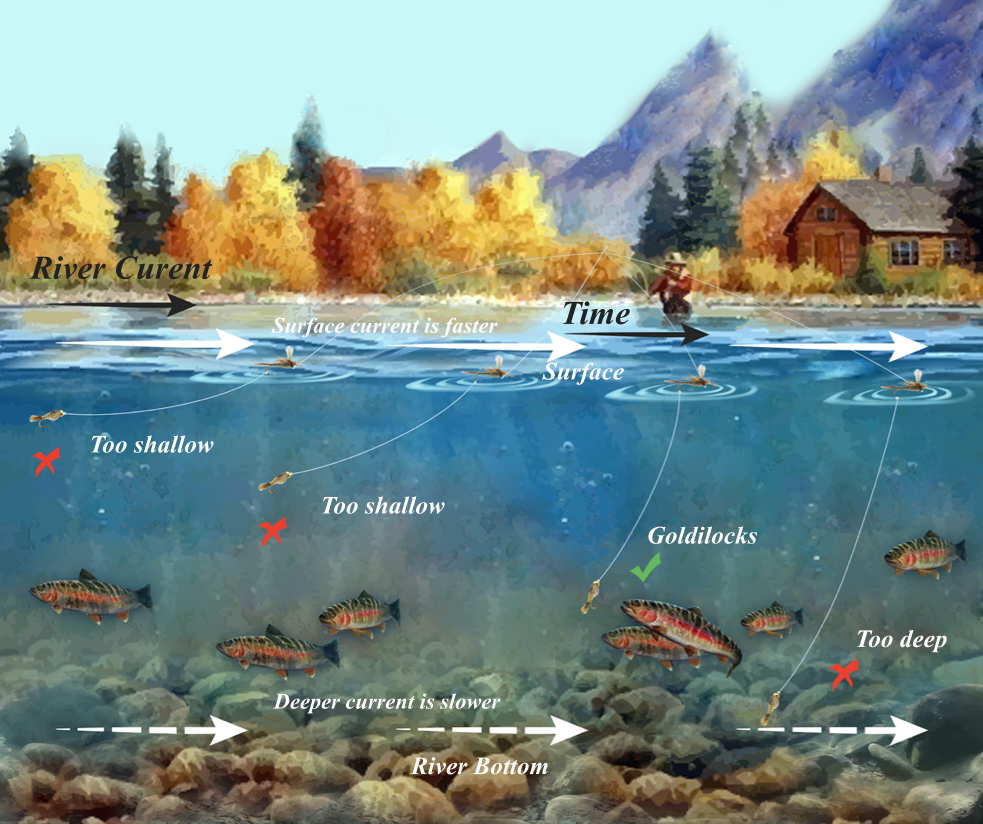Leonardo da Vinci was obsessed with water and David Ladensohn, who has been fly-fishing for forty years, knew that the artist would have made the perfect fishing guide. This book will inform and entertain anyone interested in Leonardo or fly-fishing and their unlikely intersection.
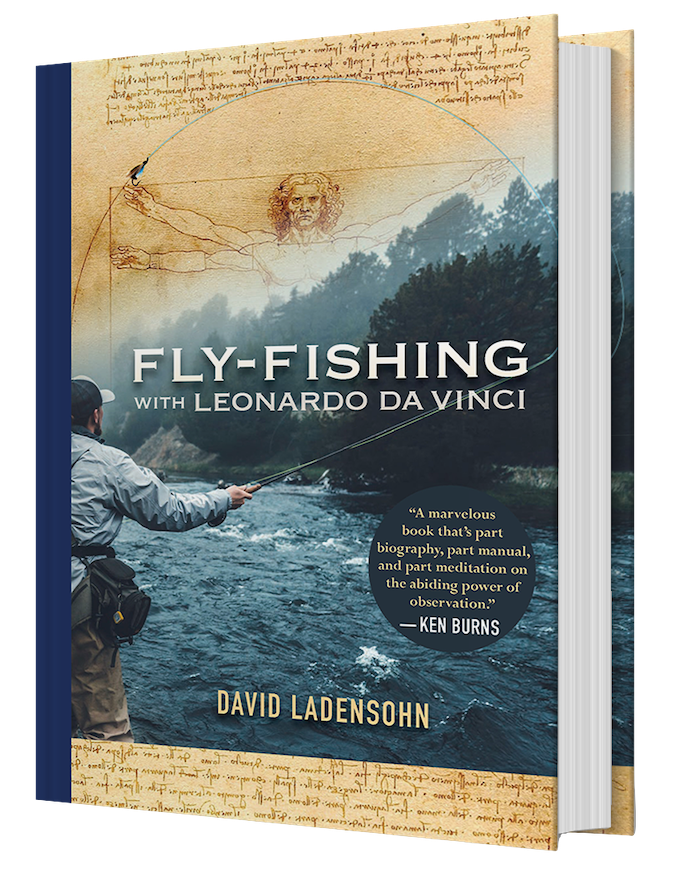

About David Ladensohn
David Ladensohn is the author of Fly-Fishing with Leonardo da Vinci and is also a mediator, retired executive, and entrepreneur. He was recently a Next Horizons Scholar at Oxford University. He lives in San Antonio, Texas, and outside of Santa Fe, New Mexico.
Fly-Fishing with Leonardo da Vinci
Leonardo understood rivers like no one else before him. He also drew them like no one else ever had. His interesting life story and the beautiful drawings he produced combine with his unequaled power of observation to produce a figure that could have been the ideal fly-fishing guide. Ladensohn explains with Leonardo’s own illustrations how the artist’s many talents would have made any angler’s day both successful and entertaining. This book is a portrait of the sport, the people who live it, and the Renaissance Man who would have loved it.

Sample Images from Fly-Fishing With Leonardo da Vinci:
- All
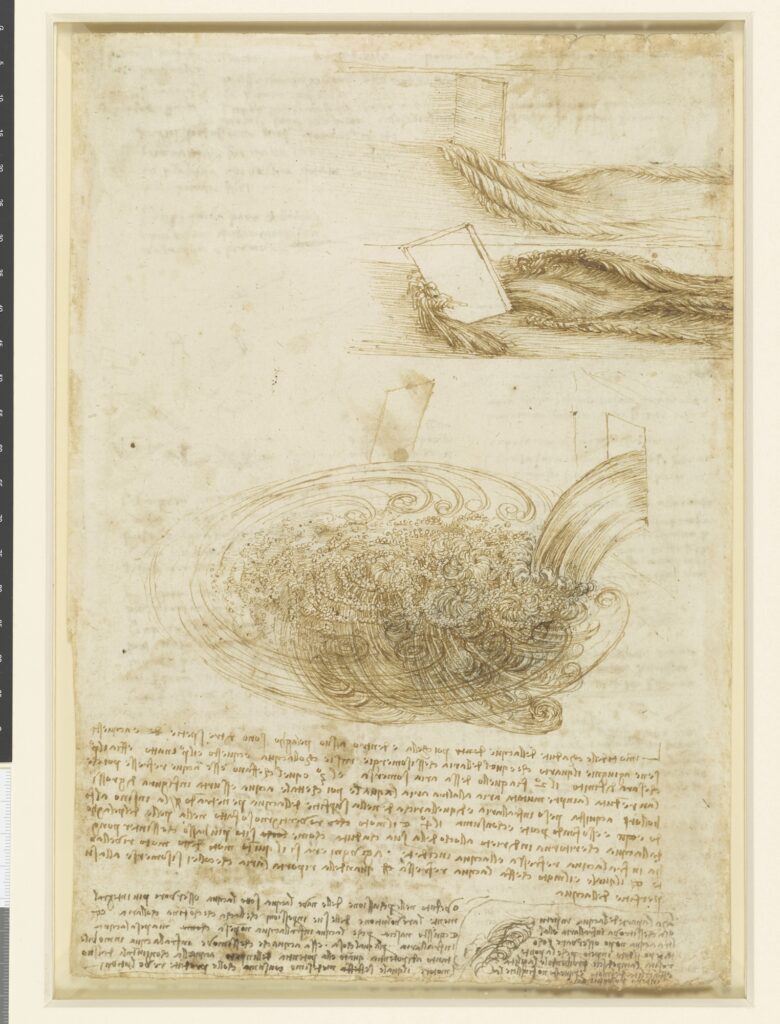
A Study of Water
Leonardo’s empirical studies of how obstacles in a stream or river affect the currents immediately show why he would have been such a perfect fishing partner or guide. The experiments in the top two drawings show the inside and outside of the cushion that forms in front of an obstacle of a certain shape and the spiraling, turbulent side waves that frame the calmer water behind the obstacle where trout can find a place to hold and feed. The bottom drawing is unique and unprecedented in that Leonardo combines his many intense observations of water falling into a pool with his scientific imagination of what those impacts produce below the surface. The many vortices and air bubbles he drew here conform to actual hydraulics, although Leonardo could not actually see all of this from his vantage point above the surface. The drawing is a perfect example of Leonardo’s fusion of observation, knowledge, and artistic talent. Studies of Water, Royal Collection Trust / © His Majesty King Charles III 2024

Experimental Glass Sided Tank
Leonardo draws water falling into a glass-sided tank, illustrating the bouncing waves and curling turbulence of water falling in this way. Although he was working out the effect on structures like bridges and river banks, anglers can incorporate this knowledge into visualizing the effect of small and large waterfalls and pocket water, the fish that try to hold near them, and the submerged nymphs we hope will look natural underwater as they drift near those trout. No one knows for certain whether this tank was actually constructed or was purely a thought experiment that Leonardo so clearly transcribed from his mind’s eye onto paper. Detail from "Paris MS I" © Library of the Institut de France, Ms2180.
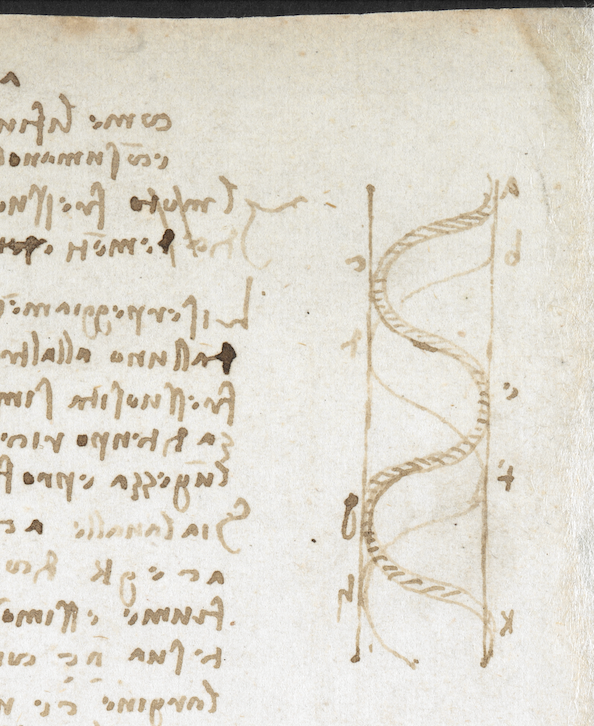
How a River Makes its Course
This simple-looking detail illustrates two important scientific observations. First, Leonardo was focused on the manner in which the main current in rivers reflects (bounces) off one river bank and then, downstream, the other. He labels the points of impact with letters of the alphabet drawn in mirror script that appear backward to us. Leonardo used his knowledge and his calculations of how this actually happens to perform what anglers call “stream architecture”: modifying one bank with rocks or other in-stream structures to protect from erosion or shift erosion away from houses or valuable lands. Further, he predicted how over time the entire course of a river shifts downstream as the existing banks erode and the pattern of reflection changes. This future river course is illustrated in a thinner, lighter line. This knowledge is important to anglers seeking soft water near river edges and cut banks where trout love to hold. Detail © British Library Board, Arundel MS 263
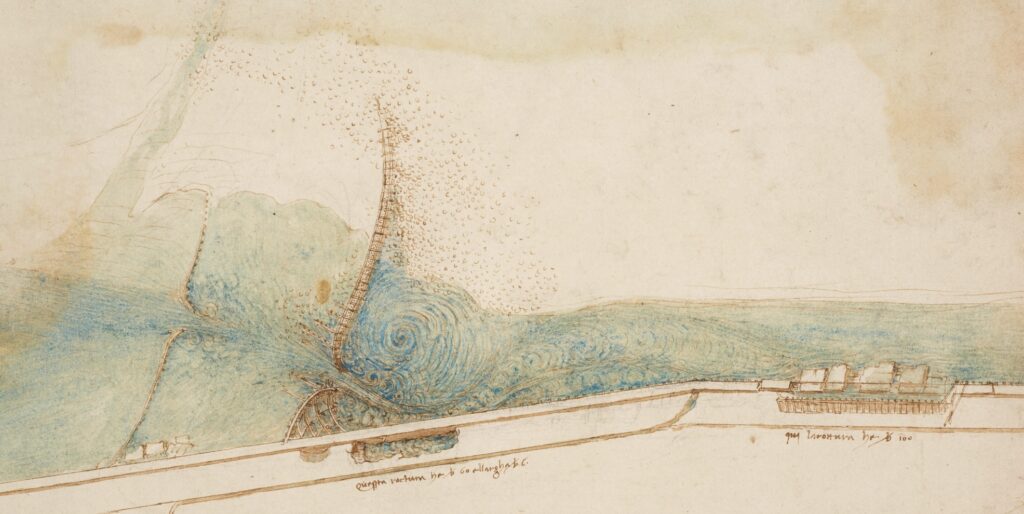
A Weir on the Arno East of Florence
Leonardo drew “A Weir on the Arno East of Florence” for government officials, so he wrote in the conventional manner instead of his own mirror script. It shows how previous poor design caused erosion of farmland downstream, a flaw he could correct with his superior knowledge of “stream architecture”. He also illustrates his fascination with vortexes downstream, which progressively cause less turbulence and create good holding water for trout. Royal Collection Trust / © His Majesty King Charles III 2024
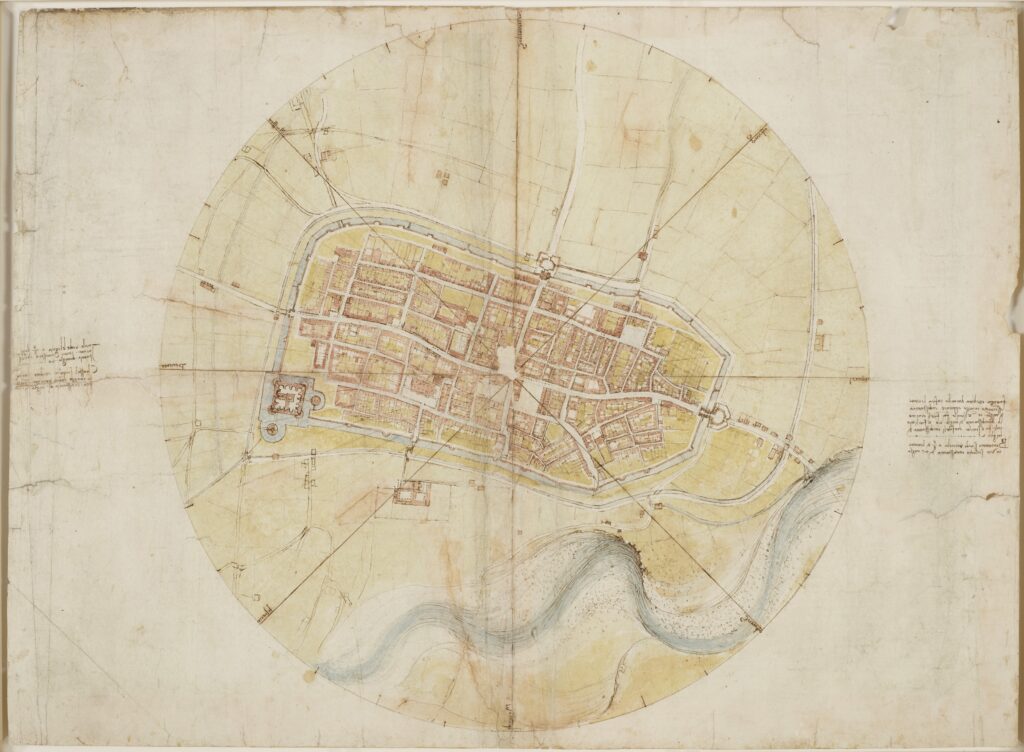
A Map of Imola
“Map of Imola” is an innovative and beautiful bird’s eye view of a town east of Florence, where Leonardo walked off every inch to produce this survey for the pope’s son who threatened to conquer Tuscany for his own gain. Leonardo may have been spying for the government of Florence under instructions from Machievelli, even as he worked for their enemy. The details of the river on the south side of the town provide an excellent guide for any angler wanting to find the areas downstream of the main current’s impact points, where trout could be found. Royal Collection Trust / © His Majesty King Charles III 2024
Recent Press
View the latest media featuring Fly-Fishing with Leonardo da Vinci.
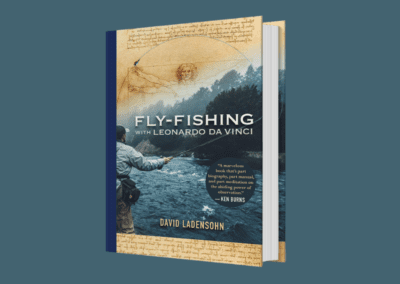
California Fly Fisher Magazine
Reviews of “Beartooth: A Novel” and “Fly Fishing with Leonardo Da Vinci”
https://calflyfisher.com/resources/the-paper-hatch/the-paper-hatch-47/
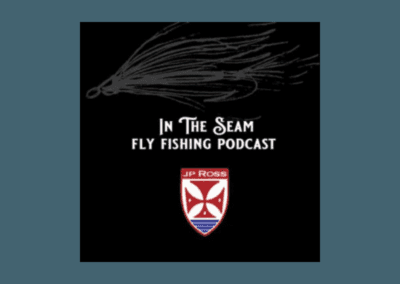
In The Seam Fly Fishing Podcast
Fly Fishing with Leonardo Da Vinci, interview with David Ladensohn

Authority Magazine
David Ladensohn On The 5 Things You Need To Be A Successful Author or Writer
Contact David Ladensohn
Reach out to David by completing the contact form below.
"*" indicates required fields
